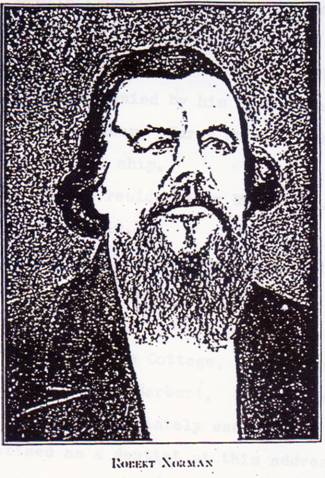
South Australian Medical Heritage Society Inc
Website for the Virtual Museum
Home
Coming meetings
Past meetings
About the Society
Main Galleries
Medicine
Surgery
Anaesthesia
X-rays
Hospitals,other organisations
Individuals of note
Small Galleries
Ethnic medicine
- Aboriginal
- Chinese
- Mediterran
The hand of Corporal ColesACKNOWLEDGMENTS: We are grateful to Rose Wilson archivist of the RAH History and Heritage Society. Philip Keane, director of the RAH medical library and Dr. PM Last. They provided the relevant background information and allowed us to photograph the prosthesis.
John Coles was born at Chumleigh a North Devon village. At the age of 21 (July 1835) he began military training at Woolwich and joined the Corps of Sappers and Miners. In 1837 he sailed to Western Australia as part of a military exploration party lead by Captain George Grey. Grey held him in high esteem and Coles accompanied Grey on several dangerous expeditions. Grey referred to him as “my faithful and tried companion in all my wanderings”. John Coles arrived in South Australia in 1840 and was a member of several expeditions with Edward John Eyre and E. C. Frome.
.
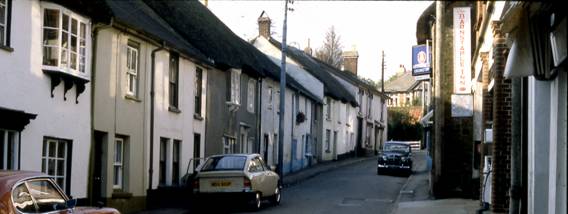 A street of thatched & slate roofed cottages in Chumleigh, Devon.
A street of thatched & slate roofed cottages in Chumleigh, Devon.
The “Barnstaple Inn” is on the right. (1975).
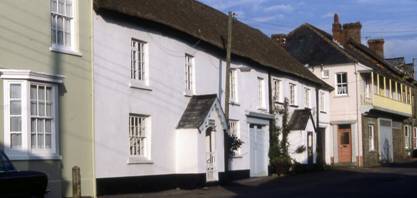
He lost his hands in 1842 while priming a cannon on North Terrace in order to perform a celebratory firing (feu de joie), to honour the birth of the Duke of Cornwall. The charge exploded prematurely, and he lost his right hand except the thumb and some fingers of his left hand.”. (quote from Dr. Last).
After the accident Coles was pensioned off (one shilling a day) and given farm land at Penwortham. He eventually (1856) attained the office of Crown Lands Ranger. His duties were to prevent illegal depasturing of stock, illegal timber cutting, and supervision of public roads and reserves. He remained in close contact with Governor Grey and became a substantial land owner.
The elegant whale-bone prosthesis was made by Robert Norman an Adelaide surgeon-dentist and presented to John Coles as a token of respect and friendship by Governor Grey. It is likely that the hand is one of the first prostheses made in South Australia .
.
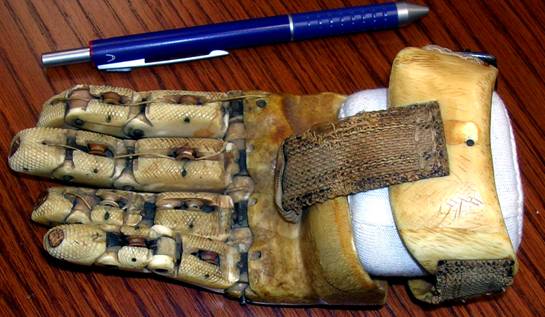
.
Hand prosthesis palmar view showing 4 fingers and operating pulleys and strings.
The fingers could be flexed by tightening the strings which were attached to a ring on the remaining right thumb.
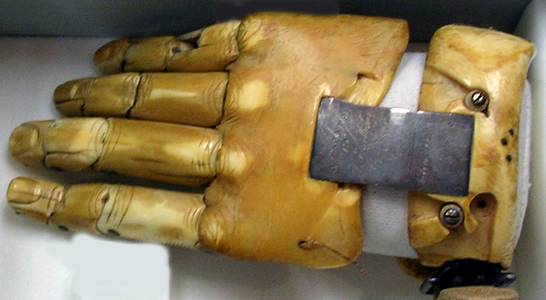
Dorsal view of the right hand prosthesis
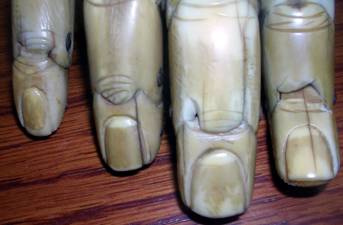
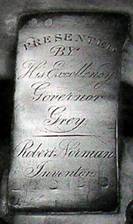
Detailed view of fingers and nails
Plaque attached to the hand
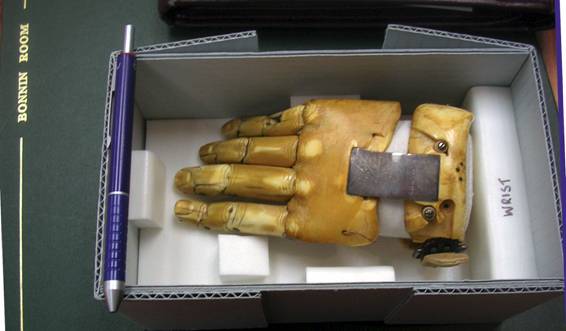
The hand in its container stored in the Bonnin room of the RAH medical library
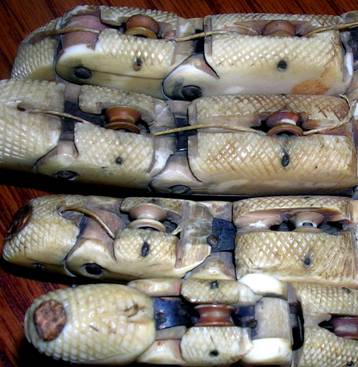
Close up view to show pulley mechanism
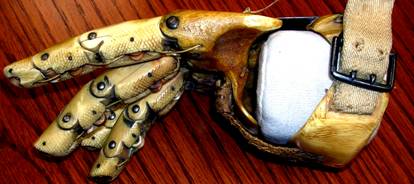
Lateral view showing joints and flexed fingers
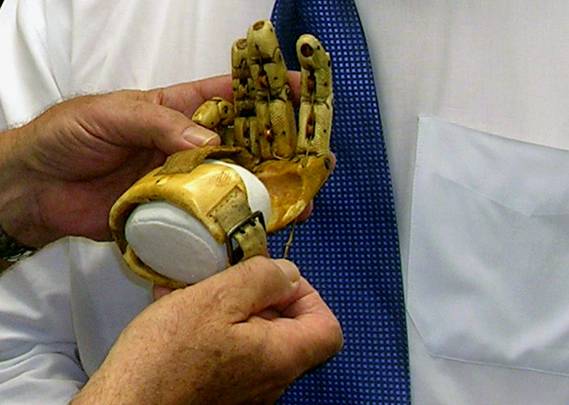
Palmar view of the hand showing the string which emerges through a hole in the back of the hand.
Traction on the string flexes the index finger.
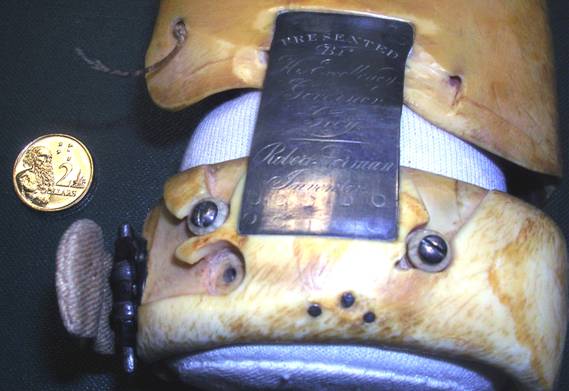
Close up view of the mechanism. the string which flexes the index finger emerges through a hole on the top left.
Three other strings originally emerged and hooked around the pulleys on the back of the hand. They were attached to a ring on the remaining thumb.
ROBERT NORMAN:
Robert Norman (1808-1885) arrived in Largs Bay in 1844 aged 36, and commenced dental practice in Adelaide . His final office was at Bellevue Cottage east of the G & R Wills warehouse and he practiced there until his death in 1883. He had many interests. A report in the Observer in 1845 mentioned that a Dutch surgeon had developed a functional prosthesis of a human hand. The article claimed that Norman “was about to give proof of his mechanical skill in the substitution of the missing human form divine by providing a veteran retainer of his excellency (corporal Coles) with a new right hand”. The article claimed the wearer will be able to deal a pack of cards, lift a glass of wine, and hand a plate. Governor Grey was pleased with the result and directed that the cost of the hand be charged to his private purse.
Mr. Norman also aided G.A.F. Heseltine in the development of Daguerrotype, an early type of photography pioneered by Louis J. M. Daguerre in France in 1839. A layer of silver halide on a polished copper plate was exposed to light focussed by a camera lens, and developed in mercury vapour. The exposure time was very long.
He was the first to plant vines at Yankalilla and his vineyard of 40 acres was the largest in the district.
In 1849 a notice appeared in the Register that he intended to develop a small township on his property on the Bungala river and had a million bricks made. After many negotiations and discussions of priorities it is likely that Normanville bears his name.
Daguerrotype of Robert Norman
-o0o-
